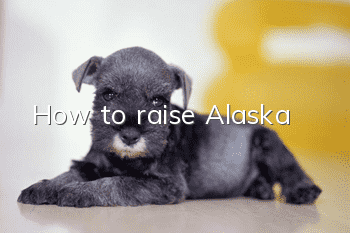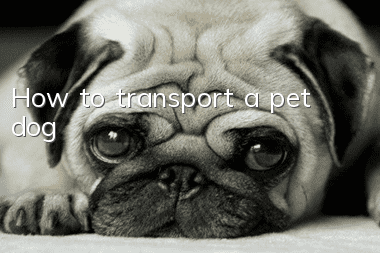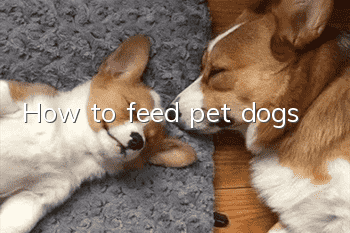How to raise Alaska

About 2 months:
1. Eat a balanced diet, regularly and quantitatively. Puppies have weak digestive abilities, so only provide them with specialized and high-quality dog food. Develop the habit of regular feeding and don’t give it random snacks. Avoid letting puppies develop bad habits of being picky eaters, which may lead to malnutrition. Don’t be overly full every time you feed. Generally, 7-8 minutes of fullness is enough.
2. Understand the health status of puppies through their feces. Pay attention to the color, smell and presence of insects in the pup’s feces. Normal feces are strip-shaped, moderately soft and hard, and slightly yellow. But it may also be affected by food. For example, when eating meat or animal liver, the feces will usually be black. The urine is light yellow and clear and transparent. When you pee for the first time in the morning, the color will be darker. If you find that the urine color is always darker, you should suspect whether you are sick.
3. Keep warm and avoid catching cold. Don’t think that you only need to keep warm in winter, you need it in summer as well. Be careful not to let the puppy's belly touch the ground for a long time, as this will easily catch cold and cause diarrhea or a cold.
4. Don’t go out for a walk with it. Puppies should not go out for walks before they are five months old. Since the puppies' bones are not fully developed, walking for a long time will cause bone deformation in the limbs and they are also susceptible to diseases. But you can play with it indoors.
5. Immunization work is very important. After the puppies are born for 2 months, the antibodies brought from the mother have almost disappeared, and they are most susceptible to various viral diseases at this time. Therefore, it is most important to be vaccinated against canine distemper, canine parvovirus and infectious hepatitis so that you are prepared.
How to raise an Alaskan dog
3 months:
1. Provide basic education to puppies
People need education, and so do dogs. At three months old, basic education can begin. First of all, let it develop good eating habits. Some dogs like to play while eating. If you find this, take away its food bowl immediately and let it see it until the next feeding. Let it eat when it is dry, and it will be effective after a few times.
2. Don’t let it eat randomly
Puppies of this age especially like to pick up things from the ground to eat, so owners should pay attention to the hygiene of indoor floors. Some accidentally ingested foreign bodies will be excreted with the feces, but some can damage the gastrointestinal mucosa or cause intestinal obstruction. Therefore, if you find severe vomiting or abdominal pain, you should seek medical treatment in time.
3. Consciously train puppies to eliminate
To train a puppy to urinate and defecate at a fixed point, use a newspaper dipped in the dog’s urine and place it where you want it to defecate.place, so that the dog will gradually become accustomed to excreting in an area with its own smell. If you want it to defecate outdoors, you must provide it with sufficient opportunities to go out. However, puppies sometimes urinate due to excessive joy or fear. This is because the regulatory nerves are not yet mature and are difficult to control. The owner should be understanding and tolerant.
4 months:
1. Puppies that are 4 months old begin to grow permanent teeth. Because the roots of the teeth are itchy, the dog will chew everywhere. You can prepare some bones or chewing gum for it.
2. As the weight increases, the nutritional demand will also increase, so it is necessary to supplement calcium with pet-specific products under the guidance of a veterinarian.
3. Alaskan dogs of this age can have their hair trimmed, but the number of baths should not be too many. Generally, once a week in summer and twice a month in winter is enough.
5~7 months:
1. Since the permanent teeth of 5-month-old puppies are still growing, they will still chew things, and they still need to prepare bones to grind their teeth.
2. The peak period for puppies to chew is the age of 6 months, and the chewing habit will gradually ease after that. The permanent teeth have finished growing when they reach 6 months of age. Alaskan dogs at this age can go for a walk outdoors. At first, they may be reluctant to walk because they are timid. You can first find a quiet place in the community to let the dog gradually adapt to the outdoor environment. After a few times, it will Now that you are willing to go out for a walk, the walking time for Alaskan dogs should not be too long, about 20 minutes each time, twice a day. When going out for a walk, you should also prevent your dog from picking up random things to eat.
3. The bones of Alaskan dogs have basically stopped developing at the age of 7 months, but you still need to pay attention to the dog’s diet, which should be moderate and nutritionally balanced.
More than 12 months:
For Alaskan dogs over 12 months old, the feeding frequency should be changed to once a day. At this time, the body of the Alaskan dog has grown to be similar to that of an adult Alaskan dog, and the stomach capacity has also increased. The food eaten at one time is enough to provide the energy needed throughout the day. In order to keep the Alaskan dog healthy, the principle of feeding is to make it eight times full. How to measure the food supply? You can observe the Alaskan dog's food intake in 3-4 days, and then add the average to calculate the average daily food supply. Then slightly reduce this amount to make it want to eat more after eating it. This is almost The so-called "eighty percent full". If you let it eat enough every day, it will easily lead to obesity. The eight-point fullness principle must be strictly followed.
The feeding time must be fixed every day. The feeding time can be in the morning or evening. It is best to feed the dog after returning from a walk, defecation, combing, and tidying up, so that it can have a regular life every day. Newly grown Alaskan adult dogs are lively and active and consume a lot of physical energy, so attention must be paid to providing nutritious and high-calorie food. In order to prevent it from getting too fat, try not to feed it any other food except regular meals. But in order to makeIts teeth, bones and jaws will grow stronger. Occasionally, you can give it some beef bones or pig bones that are high in calcium to chew on. Eating too much bones is not good either. Giving it twice a week is enough.
The Alaskan dog will slowly lose vitality and gradually develop the characteristics of an older Alaskan dog. The metabolism of Alaskan dogs in their old age has declined day by day, and the calories consumed have also decreased, so health problems must be put on the agenda. During this period, you can feed it some food with low protein and low fat content.
If you plan to switch from feeding the Alaskan dog food to special dog food after it reaches adulthood, you can first halve the family meal and then mix in some special dog food to feed it, and then slowly increase the proportion of special dog food every day. If your Alaskan dog really doesn’t like to eat, you can fast for 1-2 days. Doing this will not have much impact on the Alaskan dog. As long as you persist for a period of time, the Alaskan dog will get used to eating special dog food. You can also make your Alaskan dog live more comfortably when it gets old. The gastrointestinal function of the old Alaskan dog is not good, and the amount of activity is low, which can easily cause constipation, so you can add some plant fiber to it. If your old Alaskan dog’s teeth are not very good, you can change the hard special dog food to softer dog food.
- What are the common sense about golden retriever breeding?
- How to feed a dachshund
- How to brush your pet dog’s teeth
- What are the feeding precautions for Border Collie puppies?
- What is the personality of the Siberian Husky?
- What are the precautions for raising Tibetan Mastiff?
- Alaskan Malamute Feeding Method
- How to choose a beagle puppy
- What are the feeding precautions for Shiba Inu puppies?
- What should I do if my Teddy dog bites?



